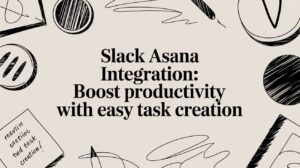Let’s be honest: to increase employee productivity isn’t about cracking a whip or tracking keystrokes. That old-school “more hours, more output” mindset is a recipe for burnout. The real secret is building a system that actually empowers your team, keeps them engaged, and prioritizes their well-being.
Table of Contents
When you create a culture where people feel genuinely valued and have the right tools and autonomy, you’re not just boosting output. You’re tackling the root causes of disengagement and unlocking the potential that was there all along.
What Productivity Really Means in Today’s Workplace
The way we work has changed dramatically, so our definition of productivity needs to catch up. It’s no longer a simple game of counting tasks per hour. Real productivity is about the sustainable, high-quality work that comes from a team that feels supported and motivated.
Too often, leaders become hyper-focused on metrics and overlook the human element that drives performance. A huge barrier here is the quiet epidemic of low employee engagement. We see it in the form of “quiet quitting”—where people show up, do the bare minimum, and go home. It’s a silent killer of a company’s potential and a massive red flag that the work environment is failing its people.
The Real Cost of Disengagement
A disengaged team isn’t just a morale problem; it’s a direct hit to your bottom line. Employee engagement is alarmingly low across the globe, with only about 21% of workers feeling engaged at their jobs in 2024. This isn’t just a soft metric. It has resulted in a staggering $438 billion loss in productivity worldwide.
That number tells a clear story: how your team feels has a direct and measurable impact on how they perform. When you dig into it, you realize true productivity is a systemic outcome. It’s built on a foundation of clear communication, genuine well-being, and—perhaps most importantly—consistent recognition.
To give you a clearer framework, I’ve broken down what I consider the essential components for a high-performing, modern team.
The Three Pillars of Modern Employee Productivity
| Pillar | Core Principle | Key Actions for Managers |
|---|---|---|
| Empowerment | Granting autonomy and trust. | Delegate ownership, not just tasks. Provide the right tools and resources. Encourage independent problem-solving. |
| Engagement | Connecting work to a larger purpose. | Clearly communicate team and company goals. Foster a culture of open feedback. Create opportunities for skill development. |
| Recognition | Making contributions visible and valued. | Celebrate wins, both big and small, publicly. Implement a peer-to-peer recognition system. Link recognition directly to specific positive behaviors. |
These three pillars work together. You can’t just pick one and expect magic to happen. They form a self-reinforcing cycle that builds momentum over time.
Shifting Focus to Empowerment and Recognition
To truly move the needle on productivity, you must shift your focus from monitoring activity to building an environment of trust and genuine appreciation. That means giving your team the autonomy to own their work, keeping them connected to the mission, and consistently celebrating their contributions.
This visual really brings the whole concept to life.

As you can see, recognition isn’t just a feel-good extra. It’s the glue that holds empowerment and engagement together, creating a powerful feedback loop that fuels motivation. When you weave simple acts of appreciation into your daily workflow—maybe through a Slack app like AsanteBot—it becomes a visible, consistent part of the culture.
Key Takeaway: Productivity isn’t about squeezing more out of people. It’s about creating conditions where people are inspired to give their best, and that begins with feeling seen and valued for their efforts.
If you’re looking for more hands-on ideas, these proven strategies to boost productivity offer some great starting points for different work environments.
Build a Culture of Recognition to Fuel Motivation
If you’re asking how to increase employee productivity, the answer isn’t buried in new software or tighter deadlines. It’s found in the small, daily interactions that make your team feel seen, valued, and genuinely connected to their work. Think of a strong recognition culture as the engine that drives real engagement and discretionary effort—that extra push people give not because they have to, but because they want to.
The importance of team recognition can’t be overstated; it fulfills a core human need to feel appreciated. When employees’ contributions are acknowledged, they feel their work has meaning, which directly boosts morale and motivation. This positive reinforcement kicks off a powerful feedback loop: recognized employees are more engaged, and engaged employees are more productive. But the real magic happens when recognition isn’t just a top-down affair from managers. It’s when it becomes a peer-to-peer habit, woven directly into your team’s everyday conversations.

Why Recognition Has a Direct Impact on Productivity
Let’s be clear: recognition isn’t just a “nice-to-have” HR initiative. It’s a fundamental human need that translates directly into business results. When your people feel appreciated, their confidence grows, their sense of belonging deepens, and their performance naturally improves. This is especially true for your top talent.
The data backs this up. Research shows that highly talented employees can be up to eight times more productive than their peers. On top of that, companies with well-connected employees who actively use collaborative tools see productivity jump by a staggering 20% to 25%. The link between recognition, collaboration, and output is impossible to ignore. For a closer look at the numbers, you can explore the full research on employee productivity statistics.
Key Takeaway: Public, frequent recognition doesn’t just motivate the person receiving it. It sets a visible standard for what success looks like and inspires the entire team to aim higher.
Making Recognition a Daily Habit in Slack
The best recognition programs are the ones people actually use. That means they need to be lightweight and baked into the platforms your team lives in every day, like Slack. This removes all the friction and makes giving praise a natural part of the workflow, not a chore. Instead of waiting for a quarterly review, wins can be celebrated the moment they happen.
Here’s a practical example of how to get this going right away:
- Create a Dedicated Channel: Fire up a public channel like
#kudosor#wins. This carves out a specific space for shout-outs, making appreciation visible across the entire company. - Encourage Specificity: Coach your team to move past the generic “Good job!” and get into the details. Praise that highlights specific actions and their impact is what truly resonates.
- Lean into Visuals: Don’t underestimate the power of emojis, GIFs, and images. They make the recognition more engaging and personal. A simple trophy emoji (🏆) or a well-chosen GIF can amplify the positive vibe.
Practical Examples of Peer-to-Peer Recognition
To kickstart the habit, give your team some clear examples of what great recognition looks like. This helps them get comfortable and see how easy it is to participate.
Scenario 1: Celebrating a Project Milestone
- Post in
#wins: “Huge props to @SarahL for single-handedly squashing that critical payment gateway bug! Her deep dive saved us from a major launch delay. The whole team appreciates you going the extra mile!”
Scenario 2: Acknowledging Cross-Team Help
- Post in
#kudos: “Big thank you to @DavidChen from Marketing for jumping in to help us create those last-minute presentation slides. Your design skills made our pitch so much stronger, and we couldn’t have done it without you.”
Scenario 3: Recognizing Proactive Problem-Solving
- Post in
#kudos: “Shout-out to @MariaR for flagging a potential security vulnerability during her code review. Her attention to detail just saved us a massive future headache. Amazing work!”
These examples give your team a solid starting point. For a more structured approach and to keep things interesting, you can also pull from these creative employee appreciation ideas.
Training Managers to Give Impactful Praise
While peer-to-peer kudos is a game-changer, praise from a manager is just as crucial. It validates an employee’s contribution at a higher level and confirms their work is aligned with team goals. But for it to be effective, it has to be done right.
Here are a few principles to train your managers on:
- Be Timely: Give praise as close to the event as possible. The longer you wait, the less impact it has.
- Be Specific: Connect the praise to a concrete action. Instead of “You’re a great team player,” try, “The way you stepped up to help Mark finish his report before the deadline was a perfect example of our team-first value.”
- Explain the Impact: This is the most important part. Show them why their contribution mattered. For example, “Because you stayed late to fix that bug, our client was able to run their monthly reports on time, which went a long way in strengthening that relationship.”
By building a culture where both peers and managers consistently and specifically recognize great work, you create a self-sustaining cycle of motivation. This foundation of appreciation is one of the most reliable strategies for how to increase employee productivity for the long haul.
Give Your Team the Right Tools and Processes to Win
Nothing kills momentum faster than clunky software and confusing workflows. If you’re serious about boosting your team’s productivity, the first place to look is at the tools and processes they lean on every single day. Even your most dedicated people will eventually burn out if they have to fight against friction just to do their jobs.
Optimizing your team’s tech stack isn’t about chasing the newest, shiniest app on the market. It’s about being incredibly intentional. You have to take a hard, honest look at what’s actually working, what’s causing daily headaches, and where the real bottlenecks are hiding. The aim is simple: create a seamless work environment where the tools serve the team, not the other way around.

Uncovering the Hidden Friction Points
Before you can fix anything, you need to diagnose the problem. You can’t improve a workflow you don’t truly understand. Instead of just guessing, start by mapping out a few common, recurring tasks from start to finish.
A practical example is to shadow a team member for an hour. Watch them navigate their daily tasks. You might discover they have to jump between five different apps just to submit an expense report, or that project updates are scattered across emails, Slack messages, and a project management tool, leaving everyone confused and out of sync.
But your most valuable intel will come directly from your team. They’re the ones in the trenches, dealing with these frustrations every day. Ask them simple, direct questions:
- What’s the single most frustrating task you have to do each week?
- Which tool in our stack feels the most outdated or difficult to use?
- If you could snap your fingers and automate one part of your job, what would it be?
The answers will give you a powerful, targeted list of what needs to change. This isn’t just about efficiency; it’s about showing your team you respect their time and are committed to clearing the obstacles out of their way.
Balancing Automation with Overload
New technologies, especially AI, promise huge productivity gains. And the adoption rates are staggering—an expected 58% of employees will be using AI tools by 2025. That’s a 107% jump from 2022. But while these tools can be incredible for saving time and sparking creativity, a poorly planned rollout can easily backfire, leading to longer hours and digital exhaustion. You can discover more insights about 2025 workplace statistics to see the trend.
The key is to be strategic. Introduce new tools to solve specific, well-defined problems, not just for the sake of having the latest tech. In my experience, consolidating communication channels and creating crystal-clear documentation are often far more impactful first steps than just adding another app to the mix.
A hard-learned lesson: A powerful tool is useless if nobody knows how to use it or, more importantly, why it’s needed. Focus on simplifying and clarifying your existing processes before you add more complexity.
A Real-World Scenario in Action
Let’s look at a common problem. Imagine a marketing team that’s constantly struggling to keep up with project updates. Information is all over the place—some stakeholders insist on email, designers drop files in a random Slack channel, and the project manager is desperately trying to keep a master spreadsheet updated. Deadlines get missed, and everyone feels perpetually behind.
Here’s a practical, process-first approach to fix it:
- Establish a Single Source of Truth: The team agrees that from now on, Asana will be the one and only place for project tasks, deadlines, and status updates. No more hunting through emails or DMs to figure out what’s going on.
- Define Clear Communication Rules: Slack is great for quick questions and informal chats, but it’s no longer used for official approvals or task assignments. All formal project communication must happen within the relevant Asana task.
- Create Simple, Visual Documentation: A one-page guide is created and pinned in the team’s Slack channel. It uses screenshots to show exactly how and when to use each tool in the new workflow. Simple.
- Automate the Annoying Stuff: An integration is set up to automatically post a daily summary of completed tasks from Asana into the team’s Slack channel. This keeps everyone in the loop without anyone having to do manual reporting.
By focusing on clear processes and using their existing tools more intentionally, the team reclaims their focus. They spend less time chasing information and more time doing the high-impact work that actually matters. And that, right there, is the entire point.
Mastering Productivity in a Hybrid and Remote World
Let’s be honest: managing a distributed team throws the old office playbook right out the window. The days of gauging productivity by seeing who’s at their desk are long gone. If you want to boost your team’s output in a remote or hybrid setup, you have to stop tracking activity and start focusing on outcomes.
This isn’t just a small tweak; it’s a fundamental shift in mindset. When you move from watching online statuses to celebrating project milestones, you’re building a culture on a foundation of trust. You’re showing your team that you trust them to manage their time and deliver great work, which is one of the most powerful motivators you have.

From Presence to Performance
I see so many managers make the same mistake with remote teams: they try to digitally replicate the in-office experience. This almost always backfires, leading to a calendar packed with pointless meetings and a sense that “Big Brother” is always watching. It’s a recipe for burnout, not productivity.
Real productivity in a distributed team is built on clarity, not constant oversight.
Instead of asking, “Are you working?” the better question is, “Do you have everything you need to hit our goal?” This simple change gives people the freedom to structure their day around their own energy and focus levels, whether that means an early start or focused work sprints with a long midday break.
Fostering Connection to Combat Isolation
While autonomy is key, you can’t forget about connection. Isolation is a silent killer of productivity and morale for remote workers. As a leader, you have to be intentional about weaving the social fabric that used to form naturally around the office coffee pot.
Here are a few practical examples of how to foster connection:
- Virtual Co-working Sessions: Block out a couple of hours a week for an open video call. No agenda, no pressure. People just pop in, turn their cameras on, and work quietly together. It’s a surprisingly effective way to recreate that subtle sense of shared focus.
- Dedicated Social Channels: Your work chat isn’t just for work. Create channels for things people actually care about—like
#pets,#cooking, or#weekend-adventures. This is where colleagues become friends. - Intentional Team-Building: Don’t let social events die just because you’re remote. For some fresh ideas that aren’t another awkward virtual happy hour, check out our guide on fun virtual team building activities.
A key lesson from managing remote teams is that you have to be deliberate about culture. The casual “water cooler” moments won’t happen by accident; you have to create the space for them.
Mastering Asynchronous Communication
One of the greatest gifts of remote work is the ability to do deep, uninterrupted work. But that advantage disappears if your team culture demands an instant response to every single message.
Embracing an asynchronous-first approach is a total game-changer. It means you prioritize communication that doesn’t require an immediate answer, which inherently respects different time zones and flexible schedules.
For a practical example, instead of booking a 30-minute meeting for a simple status update, a manager can post a detailed request in the relevant project channel. Team members can then respond thoughtfully when they have a natural break in their workflow, preserving their focus time.
Checklist for Inclusive Hybrid Meetings
Hybrid meetings—with some folks in the office and others dialing in—are notoriously tough to get right. It’s far too easy for remote attendees to feel like they’re watching a movie instead of participating.
Use this practical checklist to make sure everyone feels included:
- One Person, One Screen: This is non-negotiable. Everyone joins the call on their own laptop, even people in the conference room. It completely levels the playing field.
- Invest in Good Audio: A high-quality conference room mic is a must. If remote people can’t hear the side conversations, they’re not really in the meeting.
- Assign a Remote Advocate: Pick someone in the room whose job is to keep an eye on the chat and watch for virtual raised hands.
- Use Digital Whiteboards: Ditch the physical whiteboard that remote folks can’t see. Tools like Miro or Mural allow everyone to contribute in real time.
By being thoughtful about your communication rules and connection points, you can build a flexible, focused, and incredibly productive team, no matter where they are.
Measure What Matters to Improve Your Strategy
If you’re not measuring your efforts, you can’t improve them. It’s that simple. But let’s be honest, the word “measurement” often brings up images of invasive surveillance and micromanagement—and nobody wants that. The real secret is to shift your focus from tracking activity to measuring what actually matters: outcomes, quality, and morale.
This approach builds a culture of trust. It shows your team you care about their results, not just their keystrokes. To get it right, you first need to understand how to track employee productivity effectively, making sure your methods are driven by data but grounded in respect. It’s all about gathering insights that help you support your team better, not just watch over their shoulder.
Choosing the Right Key Performance Indicators
The first thing to do is define a set of Key Performance Indicators (KPIs) that give you a complete picture. Leaning on a single metric will always give you a warped view of reality. The best approach is to blend quantitative data with qualitative insights to truly understand what’s happening with your team’s performance.
Here are a few practical examples of powerful KPIs that go way beyond simple activity tracking:
- Project Completion Rate: This one’s a classic for a good reason. Tracking the percentage of projects finished on time and within budget gives you a clear, high-level view of your team’s ability to deliver.
- Quality of Output: Productivity isn’t just about speed; it’s about doing great work. You can measure this with things like customer satisfaction scores (CSAT), the number of bugs per feature, or how many revisions a piece of creative work needs.
- Employee Net Promoter Score (eNPS): This simple survey question—”On a scale of 0-10, how likely are you to recommend this company as a place to work?”—is an incredible barometer of team morale and engagement, which are directly tied to productivity.
When you focus on these kinds of outcome-based metrics, you get everyone aligned on the same goals: delivering high-quality work that moves the business forward.
When you measure outcomes instead of hours, you empower your team with autonomy and trust. This shift alone can be one of the most significant drivers of productivity you have.
Building a Simple Productivity Dashboard
You don’t need a fancy, expensive business intelligence tool to start tracking these KPIs. In fact, a simple but powerful dashboard can be built with tools you probably already use, like Google Sheets or a shared project management board. The goal is just to make the data visible and easy for everyone to understand.
A common pitfall is tracking “vanity metrics” that look good on paper but don’t actually reflect real progress. This table breaks down what to focus on versus what to ignore.
Effective vs. Ineffective Productivity Metrics
| Metric Category | Track This (Effective) | Avoid This (Ineffective) |
|---|---|---|
| Output | Project Completion Rate: Percentage of projects finished on schedule. | Hours Logged: Doesn’t account for focus or quality of work. |
| Quality | Client Satisfaction Score: Direct feedback on the final product. | Lines of Code Written: Can encourage quantity over quality. |
| Morale | eNPS Score: A pulse check on team happiness and engagement. | Online Status Indicators: Promotes “presenteeism” over actual work. |
| Efficiency | Task Cycle Time: Average time from task start to completion. | Number of Emails Sent: Rewards busywork, not impactful communication. |
This kind of simple comparison helps keep the whole team focused on what drives real results. It sends a clear message that the goal isn’t just to be busy, but to be effective.
The Power of Qualitative Feedback
Data and dashboards are fantastic, but they only tell you part of the story. Numbers can tell you what is happening, but they almost never explain why. That’s where talking to your team becomes essential.
Your regular one-on-one meetings are the best place for this. These conversations are where you can uncover the context behind the numbers. For a practical example, if project completion rates are slipping, a one-on-one might reveal that someone is struggling with a clunky new tool or that the project requirements were never clear to begin with.
Team retrospectives, held after a project or sprint, are another goldmine. They create a safe, structured space for the team to talk about what’s really going on:
- What went well?
- What didn’t go so well?
- What will we do differently next time?
Combining the “what” from your KPIs with the “why” from these conversations is the true key to continuous improvement. It lets you see the full picture, get to the root cause of any issues, and fine-tune your strategy over time.
Got Questions? We’ve Got Answers
You’re not alone. Figuring out what really moves the needle on team performance can be tricky. Here are some of the most common questions I hear from managers, with practical answers rooted in what actually works: building trust and smarter, not harder, processes.
How Can I Increase Productivity Without Micromanaging?
This is the big one, isn’t it? The secret is to stop managing activity and start leading toward outcomes. When you give your team clear goals and the autonomy to reach them, that constant need to check in just melts away. It builds a real sense of ownership.
For a practical example, instead of watching Slack statuses, use your weekly check-ins to talk about progress against real milestones. Swapping a question like, “What did you do this morning?” for “What do you need from me to hit our Friday deadline?” changes the entire dynamic. It shows you trust them.
This is also where a good peer recognition system works its magic. When colleagues are celebrating each other’s wins in public, it naturally reinforces the behaviors you want to see. The team starts holding itself accountable, and you can step back from being the watchdog.
What Is the Best Way to Start Improving Productivity Today?
If you want to make an immediate impact, give your team the gift of uninterrupted time. The biggest productivity killer, hands down, is the constant stream of pings, alerts, and “quick questions” that shatter deep work.
Here’s a simple, no-cost move you can make right now: block out a two-hour “focus time” window on the team calendar every single day. Say, from 9:30 AM to 11:30 AM. During this time, there are no internal meetings, and non-urgent Slack messages are off-limits. This one small change sends a huge signal that you respect their need to concentrate, and you’ll see the results almost instantly in both output and team morale.
My Team Seems Burnt Out. Will Pushing for Productivity Make It Worse?
It absolutely will… if you’re thinking about productivity as just “doing more stuff.” A burnt-out team is an engine running on empty. You can’t ask it to go faster.
The goal isn’t to push harder; it’s to redefine productivity as achieving better results with less friction and wasted effort.
Burnout isn’t a character flaw; it’s a systems problem. Your job is to fix the system, not the people. That means auditing workloads, getting ruthless about killing pointless meetings, and defending work-life boundaries like your job depends on it—because it does.
Real productivity improvements should feel like a relief. A practical example is automating a tedious weekly report that takes a team member two hours to compile. When you lift those burdens, you free up energy and focus, which naturally drives better results without piling on more stress.
How Do I Prove the ROI of a Recognition Program?
Connecting something like team recognition to a hard-and-fast ROI can feel a bit fuzzy, but you can absolutely build a strong business case by tracking the right metrics before and after you launch.
Instead of trying to draw a direct line to revenue, focus on the indicators of a healthy, engaged team:
- Employee Turnover Rate: This is a huge, tangible cost. See if your voluntary turnover drops after the program is in place.
- Employee Net Promoter Score (eNPS): Is your team more likely to recommend your company as a great place to work?
- Project Velocity: Are projects getting completed faster? Are you hitting your milestones more consistently?
Here’s a practical example of how you frame it: You could go to your leadership and say, “In the quarter since we launched our peer recognition program, voluntary team turnover dropped by 15%, which saved us an estimated $50,000 in hiring and training costs. On top of that, our average project delivery timeline got 10% faster.” Suddenly, recognition isn’t just a “nice-to-have”—it’s a core driver of efficiency and retention.
Ready to build a culture of appreciation that fuels productivity? AsanteBot makes it dead simple to weave peer-to-peer recognition right into Slack, turning everyday shout-outs into measurable results. You can start building a more motivated, connected team in minutes. Give AsanteBot a try.




